The different Rooms
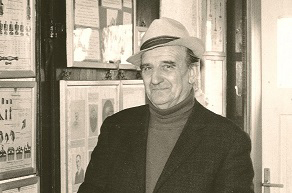 Founder Franz Gehrer in 1995..
Founder Franz Gehrer in 1995..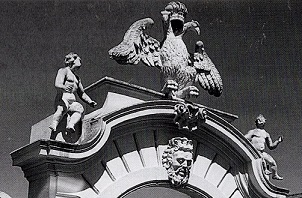 Eagle-gate. The museum houses a variety of old views.
Eagle-gate. The museum houses a variety of old views.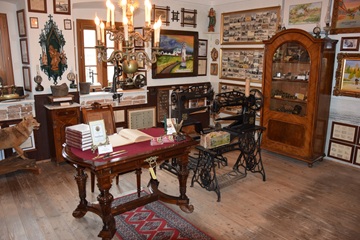 Typical exhibition room in one of the former residential units.
Typical exhibition room in one of the former residential units.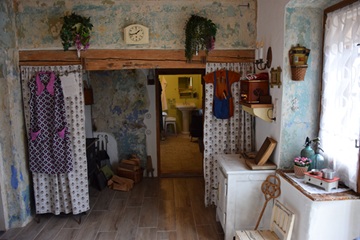 Kitchen with anteroom and wood stove.
Kitchen with anteroom and wood stove.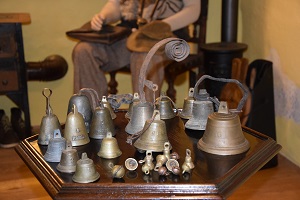 Brass products such as bells in different sizes
Brass products such as bells in different sizes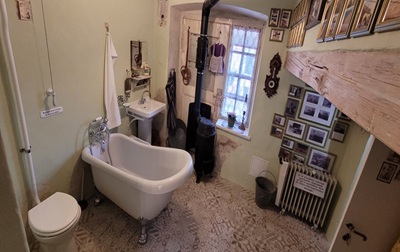 The “historic bathing room†with a narrow bathtub and a bathing oven.
The “historic bathing room†with a narrow bathtub and a bathing oven.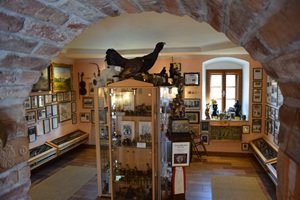 There is plenty of visual material in each of the rooms.
There is plenty of visual material in each of the rooms.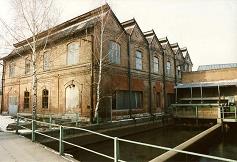
 The sewing needle factory
The sewing needle factory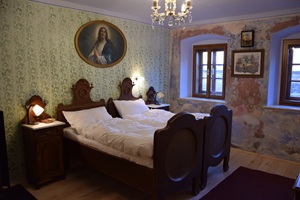 The old bedchamber.
The old bedchamber.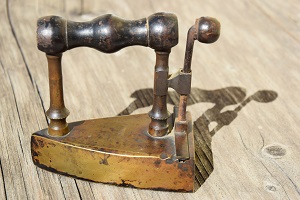 Brass irons in different variations and sizes.
Brass irons in different variations and sizes.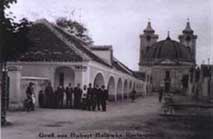 Inn with arcade, 1934, with open stream. One of many photos in the museum.
Inn with arcade, 1934, with open stream. One of many photos in the museum.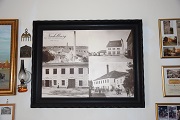 The factory area with workers in 1887. Here, among other things, there was a sewing needle factory, management building, hospital, smelting works, bronze foundry, casting works, wire drawing, pipe drawing, can factory and workers' barracks.
The factory area with workers in 1887. Here, among other things, there was a sewing needle factory, management building, hospital, smelting works, bronze foundry, casting works, wire drawing, pipe drawing, can factory and workers' barracks.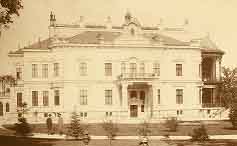 The manufacturer's villa Schloss Nadelburg was built from 1880 to 1882. The building was designed as a total work of art with countless architectural details both outside and inside. The owners of the Nadelburg lived here. Unfortunately, the castle and its palm house were senselessly demolished between 1951 and 1954 - a big mistake on the part of those responsible at the time. The adjacent "following house", the living area for the servants and employees, was also demolished between 2000 and 2002.
The manufacturer's villa Schloss Nadelburg was built from 1880 to 1882. The building was designed as a total work of art with countless architectural details both outside and inside. The owners of the Nadelburg lived here. Unfortunately, the castle and its palm house were senselessly demolished between 1951 and 1954 - a big mistake on the part of those responsible at the time. The adjacent "following house", the living area for the servants and employees, was also demolished between 2000 and 2002.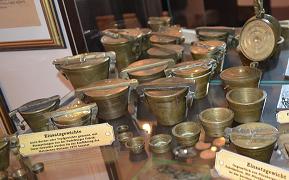 Brass insert weights. The weights were needed wherever goods were traded, weighed and customs cleared. The various parts were cast from brass and turned cleanly on the lathe to an accuracy of a hundredth of a millimeter. Even with the modern machines of our time, the production of such objects would be extremely time-consuming and difficult. In 1871, the kilogram was introduced in Austria by law, replacing the previous system (cup weights, pot weights, operating weights - pounds; Vienna pounds). 1 pound is approximately 0.45 kilograms.
Brass insert weights. The weights were needed wherever goods were traded, weighed and customs cleared. The various parts were cast from brass and turned cleanly on the lathe to an accuracy of a hundredth of a millimeter. Even with the modern machines of our time, the production of such objects would be extremely time-consuming and difficult. In 1871, the kilogram was introduced in Austria by law, replacing the previous system (cup weights, pot weights, operating weights - pounds; Vienna pounds). 1 pound is approximately 0.45 kilograms.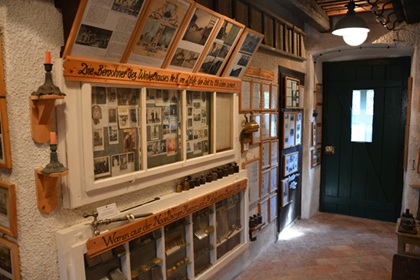 The oldest museum room from 1984, the life's work of Franz Gehrer.
The oldest museum room from 1984, the life's work of Franz Gehrer.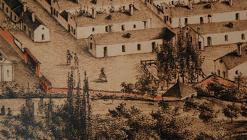 The workers' houses were separated from the manor park and the Lichtenwörth area by the "Red Wall". The original 3 gates were always locked. There was a strict separation between the factory workers and the local residents of Lichtenwörth. The course of the wall is well documented on old engravings or views.
The workers' houses were separated from the manor park and the Lichtenwörth area by the "Red Wall". The original 3 gates were always locked. There was a strict separation between the factory workers and the local residents of Lichtenwörth. The course of the wall is well documented on old engravings or views.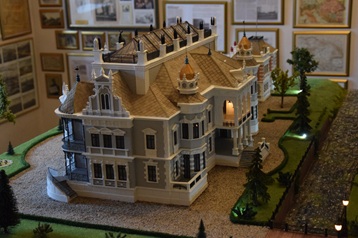 A 1:50 scale model of the stately villa shows the splendor of the Neo-Renaissance.
A 1:50 scale model of the stately villa shows the splendor of the Neo-Renaissance.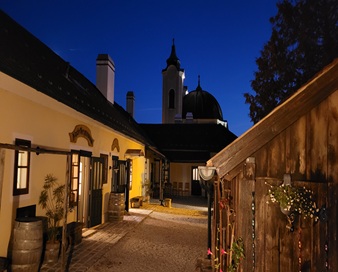 The museum courtyard and the museum.
The museum courtyard and the museum.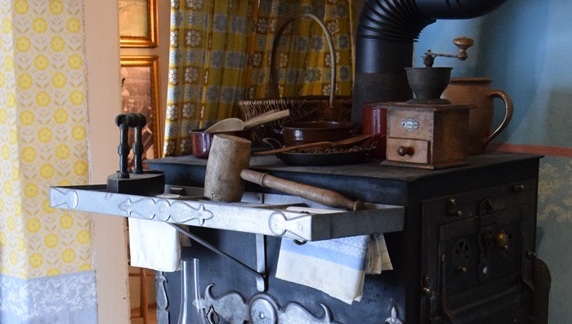 The building is full of items from old times.
The building is full of items from old times.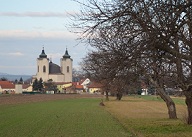 Originally a storage room, from 1850 a residential unit, today a museum room with furniture from the mansion.
Originally a storage room, from 1850 a residential unit, today a museum room with furniture from the mansion.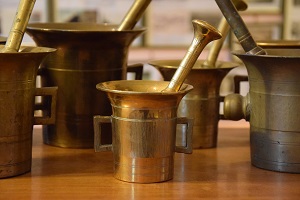 Mortars with handles or buttons, and pharmacy mortars were also produced.
Mortars with handles or buttons, and pharmacy mortars were also produced.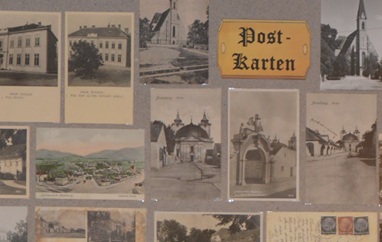 Old postcards from Lichtenwörth-Nadelburg. The museum currently houses more than 150 different postcards.
Old postcards from Lichtenwörth-Nadelburg. The museum currently houses more than 150 different postcards.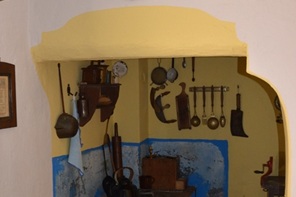 The museum building offers a variety of original rooms. This picture shows probably the smallest kitchen in Europe!
The museum building offers a variety of original rooms. This picture shows probably the smallest kitchen in Europe!